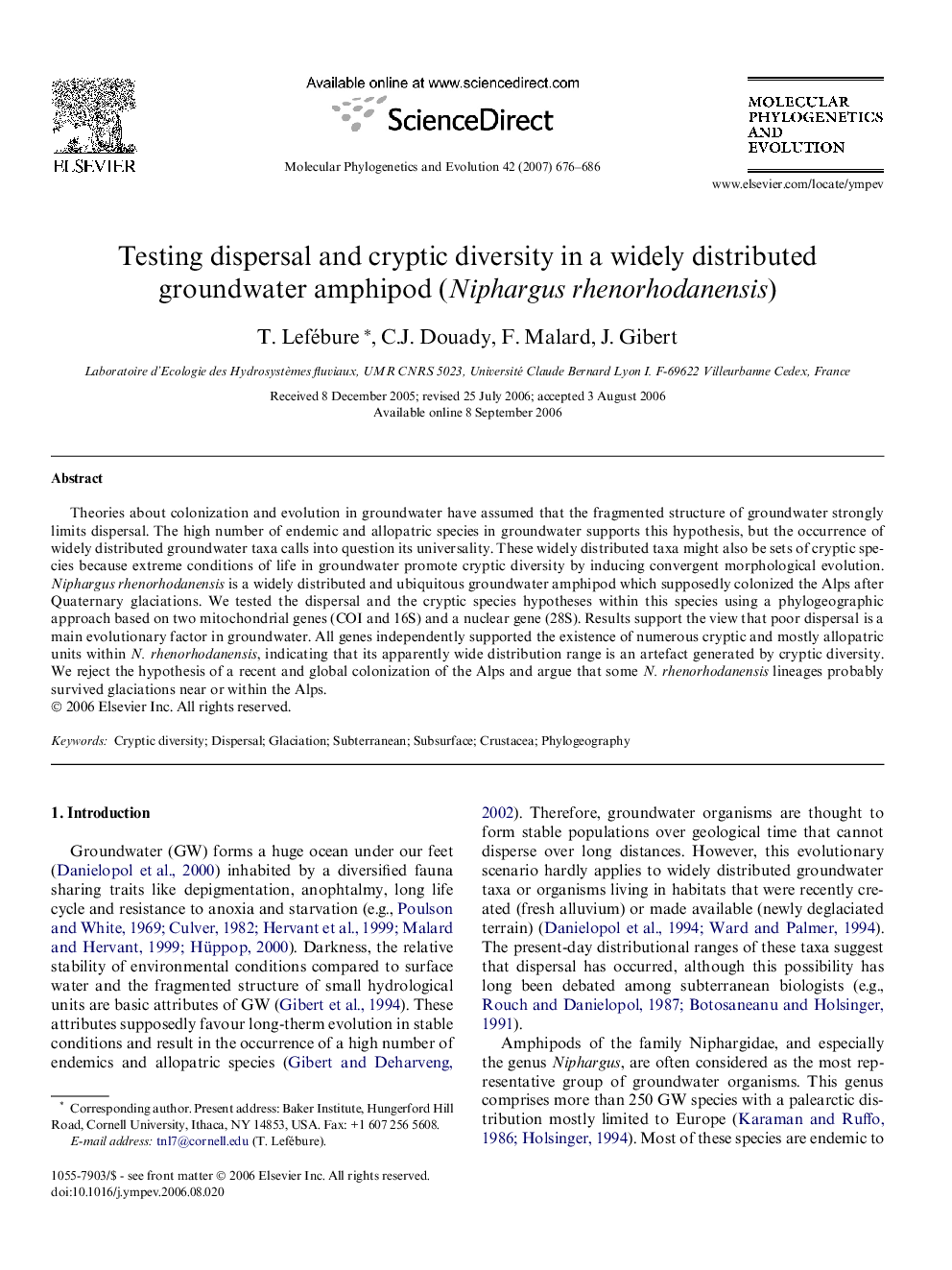| Article ID | Journal | Published Year | Pages | File Type |
|---|---|---|---|---|
| 2835269 | Molecular Phylogenetics and Evolution | 2007 | 11 Pages |
Theories about colonization and evolution in groundwater have assumed that the fragmented structure of groundwater strongly limits dispersal. The high number of endemic and allopatric species in groundwater supports this hypothesis, but the occurrence of widely distributed groundwater taxa calls into question its universality. These widely distributed taxa might also be sets of cryptic species because extreme conditions of life in groundwater promote cryptic diversity by inducing convergent morphological evolution. Niphargus rhenorhodanensis is a widely distributed and ubiquitous groundwater amphipod which supposedly colonized the Alps after Quaternary glaciations. We tested the dispersal and the cryptic species hypotheses within this species using a phylogeographic approach based on two mitochondrial genes (COI and 16S) and a nuclear gene (28S). Results support the view that poor dispersal is a main evolutionary factor in groundwater. All genes independently supported the existence of numerous cryptic and mostly allopatric units within N. rhenorhodanensis, indicating that its apparently wide distribution range is an artefact generated by cryptic diversity. We reject the hypothesis of a recent and global colonization of the Alps and argue that some N. rhenorhodanensis lineages probably survived glaciations near or within the Alps.
